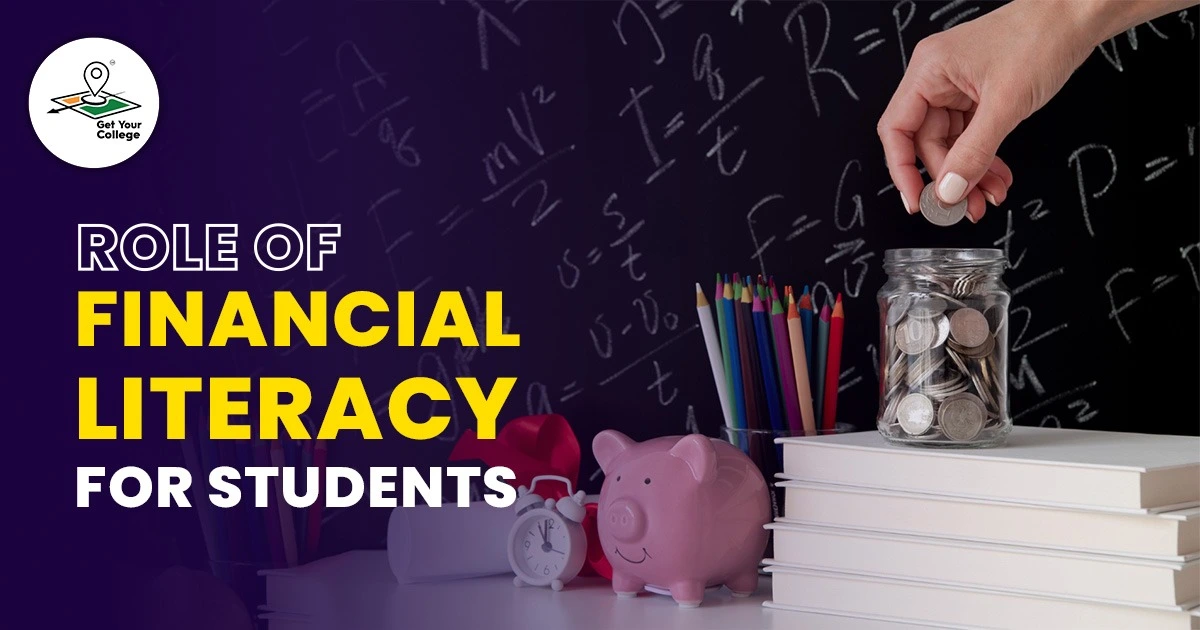In today’s rapidly evolving world, financial literacy is not merely a desirable trait but an imperative skill for success. The complexities of modern finance underline the critical importance of financial literacy for students. As they progress through their academic journey and transition into adulthood, a robust understanding of financial concepts equips students with the ability to make informed decisions, sidestep common pitfalls, and construct a stable financial future.
This blog delves into the significance of financial literacy for students, highlighting its myriad benefits and offering practical strategies for its cultivation. Financially literate students are better equipped to manage their finances responsibly, whether it involves budgeting, saving, investing, or borrowing. They possess the ability to understand financial jargon, evaluate financial products, and comprehend the implications of their financial choices.
Moreover, financial literacy instills confidence and autonomy, empowering students to take charge of their economic well-being. It fosters resilience in the face of economic challenges and promotes a mindset of long-term financial planning. Ultimately, by prioritizing financial literacy education, we arm students with the tools they need to thrive in an increasingly complex financial landscape, thereby setting them on a trajectory towards enduring prosperity.
Understanding Financial Literacy
Financial literacy extends far beyond the basic task of balancing a checkbook. It involves a comprehensive understanding of a wide range of financial concepts and practices that are essential for navigating the complexities of personal finance and the broader economic landscape.
Budgeting is a fundamental aspect of financial literacy, enabling individuals to allocate their income effectively, prioritize expenses, and achieve their financial goals. Saving entails not only setting money aside for emergencies but also planning for future expenses and investments. Understanding how to invest wisely involves knowledge of various asset classes, risk assessment, and strategies for building wealth over time.
Debt management is another crucial component of financial literacy, encompassing concepts such as interest rates, loan terms, and strategies for minimizing debt burdens. Additionally, financial planning involves setting short-term and long-term goals, creating a roadmap for achieving those goals, and adjusting strategies as circumstances change.
Overall, financial literacy empowers individuals to make informed decisions about their finances, mitigating risks, maximizing opportunities, and ultimately achieving financial security and independence. It’s a holistic understanding of financial concepts and practices that enables individuals to navigate the complexities of the modern economy with confidence and competence.
The Importance of Financial Literacy for Students
- Empowerment:
Financial literacy empowers students to take control of their financial lives. By understanding concepts like budgeting and saving, they can effectively manage their expenses, set financial goals, and make informed choices about spending and saving.
- Debt Management:
With the rising cost of education, many students rely on loans to finance their studies. Without proper financial literacy, they may fall into the trap of accumulating excessive debt. Knowledge about interest rates, repayment options, and responsible borrowing can help students manage their debt wisely and avoid financial burdens in the future.
- Career Readiness:
Financial literacy is a fundamental aspect of career readiness. In today’s competitive job market, employers value candidates who demonstrate financial acumen. Students who possess strong financial literacy skills are better equipped to handle job-related expenses, negotiate salary packages, and plan for retirement.
- Long-Term Financial Security:
Early exposure to financial literacy instills good money habits that can last a lifetime. By learning how to invest, save for emergencies, and plan for retirement from a young age, students can lay the foundation for long-term financial security and independence.
- Risk Management:
Life is full of uncertainties, and financial literacy helps students mitigate risks effectively. Whether it’s purchasing insurance, understanding the implications of investment risks, or planning for unexpected expenses, students equipped with financial knowledge are better prepared to navigate life’s uncertainties.
Practical Strategies to Enhance Financial Literacy
- Incorporate Financial Education into Curriculum:
Educational institutions should integrate financial literacy into their curriculum at an early stage. By incorporating concepts like budgeting, saving, and investing into various subjects, students can develop a solid understanding of financial principles alongside their academic learning.
- Interactive Learning Opportunities:
Engaging students in hands-on activities, simulations, and real-life case studies can enhance their understanding of financial concepts. Interactive workshops, guest lectures from financial experts, and participation in financial literacy competitions can make learning about finance more enjoyable and relatable.
- Utilize Technology:
Leverage technology to make financial education more accessible and engaging for students. Interactive apps, online courses, and educational games can provide personalized learning experiences tailored to students’ needs and learning styles.
- Encourage Financial Responsibility:
Encourage students to take on financial responsibilities, such as managing a budget for school projects or participating in student-run enterprises. By giving them real-world experience in managing finances, students can develop practical skills and gain confidence in their ability to make sound financial decisions.
- Promote Financial Discussions:
Create a supportive environment where students feel comfortable discussing financial topics openly. Encourage peer-to-peer learning, group discussions, and mentorship programs where students can share experiences, seek advice, and learn from one another’s perspectives.
Conclusion
Financial literacy is indeed a vital skill that empowers students to navigate today’s complex financial world successfully. By providing students with the necessary knowledge and skills to make informed financial decisions, we not only prepare them for academic success but also lay the foundation of their long-term financial well-being.
As educators, parents, and policymakers, it is our responsibility to prioritize financial literacy education. By integrating financial literacy into school syllabus, offering practical workshops, and providing resources for students and families, we can ensure that every student has the opportunity to develop crucial financial skills.
Moreover, fostering a culture of financial literacy promotes economic stability and prosperity at both individual and societal levels. Educated consumers are better equipped to manage their finances, avoid debt traps, and invest wisely, thereby contributing to overall financial health and resilience.
Ultimately, by collectively prioritizing financial literacy, we empower students to unlock their full financial potential, paving the way for a brighter and more secure future for themselves and their communities.



